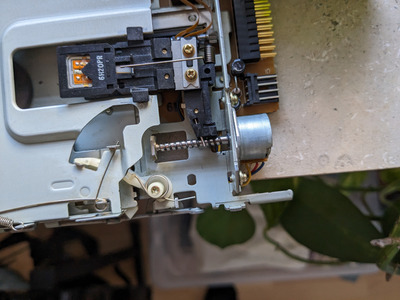peter_shaw wrote on 2023-09-25, 11:36:Hi, i just dissasembled an old floppy disk drive. It was owned by a heavy smoker. The worm screw was covered with black crusty g […]
Show full quote
Hi, i just dissasembled an old floppy disk drive. It was owned by a heavy smoker. The worm screw was covered with black crusty goo, which I removed with Isopropanol. I guess i have to re-lubricate it now. What's best for that purpose?
I have:
- bicycle chain oil
- WD 40
- Silicone based spray / oil
or is that all not good?
No oils (esp. mineral based), it'll only get sticky and attract more dirt soon enough. It's usually a plastic notch on metal screw so it will work dry, so if you need to use now it and it's already cleaned it is better to leave it as-is. Some 5.25" drives might use a worm screw but metal on metal so that does need lubrication, and mineral based grease is OK in that case.
WD40 and any thin oils are good for a quick "fix" in a pinch but not for proper lubrication. You use those, only if necessary, before the proper cleaning just to get the drive working once. Preferably though any drive so dirty that it doesn't work or is just too cacked with smoke residue (I don't deal well with that so I always clean and wash anything used by smokers) should be disassembled and cleaned.
Preferably use something dry, like PTFE grease. Silicon grease (used in car brake systems) is also good, and plastic friendly, but it's not as dry as PTFE. By the way, clean the polished rods the sled (with heads) moves on, those you really don't want to lubricate at all, even with PTFE. The bushings in the sled are plastic or brass, they will never seize as long as there isn't a layer of dirt - but often there is, and this is a perfect example of both cigarette tar / tobacco residue and poor lubrication points doing harm. To clean the rods and bushings you might need to unsrew the rod holders, just take care not to move the stepper motor and the track 0 sensor, or you'll need to recalibrate the drive after reassembly.
